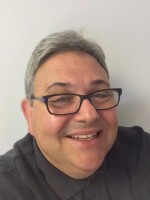Nasal Irrigation for Pediatric & Adolescent Allergic Rhinitis, Sinusitis, Nasal Congestion & Asthma – A Safe & Effective Non-Prescription Approach
 |
Alan H Cohen, MD, FAAP, FCCP, FAAAAI, FCAAI Board certified Pediatric Pulmonologist Clinical Adjunct Faculty – Stanford University, Packard’s Children’s Hospital About the author: Dr. Cohen is a board-certified pediatric pulmonologist. He currently holds an appointment as adjunct clinical faculty at Stanford University School of Medicine – in the Dept of Pediatric Pulmonology and Critical Care Medicine at Lucile Packard Children’s Hospital seeing patients, teaching and working with the medical students and fellows in both allergy and pulmonary medicine. |
As a Board Certified Pediatric Pulmonologist who cares for many children and families experiencing allergic rhinitis, seasonal allergies and nasal congestion – often associated with concomitant asthma, the role of local and topical treatment of the nasal inflammation often comes up and is typically neglected by community physicians. From my first years of training at the University of Colorado and National Jewish Medical Center in Denver, CO – we were always taught of the important role of upper airway inflammation in the management of both upper and lower airways disease. Simply put – you will oftentimes not gain sufficient control of the lower airway symptoms of wheezing, cough and bronchoconstriction – unless you begin to adequately address the chronic inflammation of the upper airway. Long before easy to buy and use premeasured “Nettie Pots” and other nasal irrigation devices to enhance successful nasal clearance for children, adolescents and adults were available – we were preaching the importance of airway hygiene and patency. Using normal saline and gentle irrigation techniques have consistently proven successful in the hands of the many children and families that I recommend using these non-medication approaches to airway care and upper and lower airway health and well-being. At a time where I am regularly fielding questions about the use of topical steroids – both in the nares and lower airways of growing children and adolescents – I have rarely met a family that is pleased or happy to hear that I am also recommending a topical nasal steroid, oftentimes to use after nasal irrigation and treatment. It optimizes the ability of the topic steroids to come into contact with the nasal mucosa more readily, and allows for these useful therapies to work as effectively and efficiently as they can. I remind people that by performing regular nasal irrigation before an intranasal steroid, as well as an inhaled daily controller medication of mild/moderate or severe asthma – like an ICS or ICS/LABA combo – they are optimizing the efficacy and success of these drugs and often enable to use a lower steroid dose, less often and at a more tolerable manner. For those with “steroid phobia” or fearfulness of using intranasal steroids – the mechanical benefits of nasal irrigation are often sufficient and helpful enough that the need for additional treatments like intranasal and lower airways steroids is less critical for optimal care outcomes. What could be simpler and safer then salt water washes in the nasal canals? At a time when many parents of growing children, and adults would like to have less prescription medications in their medicine cabinets and in their systems – more natural treatments such as nasal irrigation with saline makes even more sense.
(4802)
Vanessa Dotson Cope liked this on Facebook.
Shirley Wheeler liked this on Facebook.
Harrold Lim liked this on Facebook.
Tommy Blakeney liked this on Facebook.
Jacqueline Loftin liked this on Facebook.
Aly Bri liked this on Facebook.
Lori McCarrick Vietor liked this on Facebook.
Anne Bishop liked this on Facebook.
Carl Farris liked this on Facebook.
Dolly Lee liked this on Facebook.
Julie Veney liked this on Facebook.
Janette McGregor liked this on Facebook.
Patricia Trout liked this on Facebook.
Every one should have a neti pot
It is a valuable asset. ..
how about meigrane an general headquake